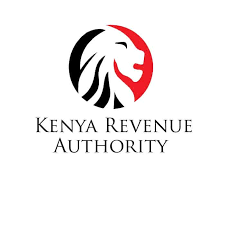How to Make Your CV ATS-Compliant
Did you know that most employers never see your CV if it can’t pass an Applicant Tracking System (ATS)? Today, companies use ATS software to filter out resumes before a human recruiter even looks at them. That means a poorly formatted CV—or one missing the right keywords—could cost you the job before you even get a chance. The good news? Making your CV ATS-compliant isn’t complicated, and a few smart adjustments can dramatically increase your chances of landing interviews.
You can quickly create an ATS-friendly CV that gets you to the forefront of recruiters by following this structure and concentrating on pertinent keywords. Here’s Step-by-Step Guide on How to make your CV ATS compliant.
What is an Applicant Tracking System (ATS)?
In the modern world, employers utilize Applicant Tracking Systems, or ATSs, to sort and rate resumes first before sending them to a human recruiter. For a single job posting, large firms may receive hundreds or even thousands of applications.
Going through the CVs one by one might be a huge task but through automated CV screening based on predetermined criteria, including keywords, qualifications, and experience levels, the Applicant Tracking System (ATS) assists recruiters in managing this excessive volume within a very short period of time.
That means if your CV doesn’t match any of the set standards, it dropped immediately saving time and making the recruitment process more efficient.
Get an ATS-friendly CV in minutes
Choose Standard Headers:
To aid the system in organizing your data, choose headers that are often used to ensure the ATS recognizes them:
- Contact Information
- Professional Summary
- Skills
- Work Experience
- Education
- Certifications (optional)
- Additional Sections (optional: e.g., volunteer work, languages, awards)
Select Basic Fonts:
- ATS can readily read plain, conventional fonts like Arial or Times New Roman.
Keep a Clean Layout:
- Steer clear of intricate designs and graphics; a simple layout enhances system readability.
Incorporate Keywords
- ATS looks/Scans through your CV for keywords in that correspond to the job description.
- When writing your CV, ensure that in the areas pertaining to skills, work experience, and qualifications, include keywords pertinent to the position you’re applying for.
How to Prepare for a Job Interview
Many businesses use technology to speed up the hiring process in the cutthroat employment market of today. The Applicant Tracking System (ATS), a software intended to handle the hiring process by scanning, classifying, and prioritizing job applications, is one important instrument. It is critical to comprehend how an applicant tracking system (ATS) operates and how to modify your resume to effectively navigate it if you want to improve your chances of being recognized.
ATS CV Basics: How to Optimize Your Resume for Applicant Tracking Systems
Your CV/Resume is your first opportunity to market yourself to your prospect Employer, so make it appear excellent. It will be very easy for a recruiter to reject you if they cannot immediately determine your skill set.
For that case, Revamp Your CV to ensure that the CV’s typography and style are eye-catching because your first page of your presentation will be used to evaluate you.
There’s no need for a lengthy CV for entry-level employment; instead, focus on your educational history and skill set.
Applicant Tracking Systems (ATS) streamline the recruitment process by scanning resumes for keywords related to the job posting. To ensure your resume is ATS-friendly:
1. Use Standard Headings: Stick to common headings like ‘Work Experience’ and ‘Education’ to help the system categorize your information.
2. Choose Simple Fonts: Opt for clear, traditional fonts like Arial or Times New Roman, which are easily read by ATS.
3. Maintain a Clean Layout: Avoid complex designs and graphics; a straightforward format improves readability by the system.
How Are ATSs Operated?
The CV you submit via an online job portal is entered into the applicant tracking system (ATS) of the organization. This is what follows:
Parsing: Your resume is divided into sections by the system based on your education, experience, and talents.
Keyword Matching: Your CV is scanned by the ATS for particular keywords associated with the position. The job description is frequently the basis for these keywords.
Ranking: The ATS assigns candidates a rank based on how well their resume matches the job specifications. The greater your rating, the greater the probability that a recruiter will see your CV.


